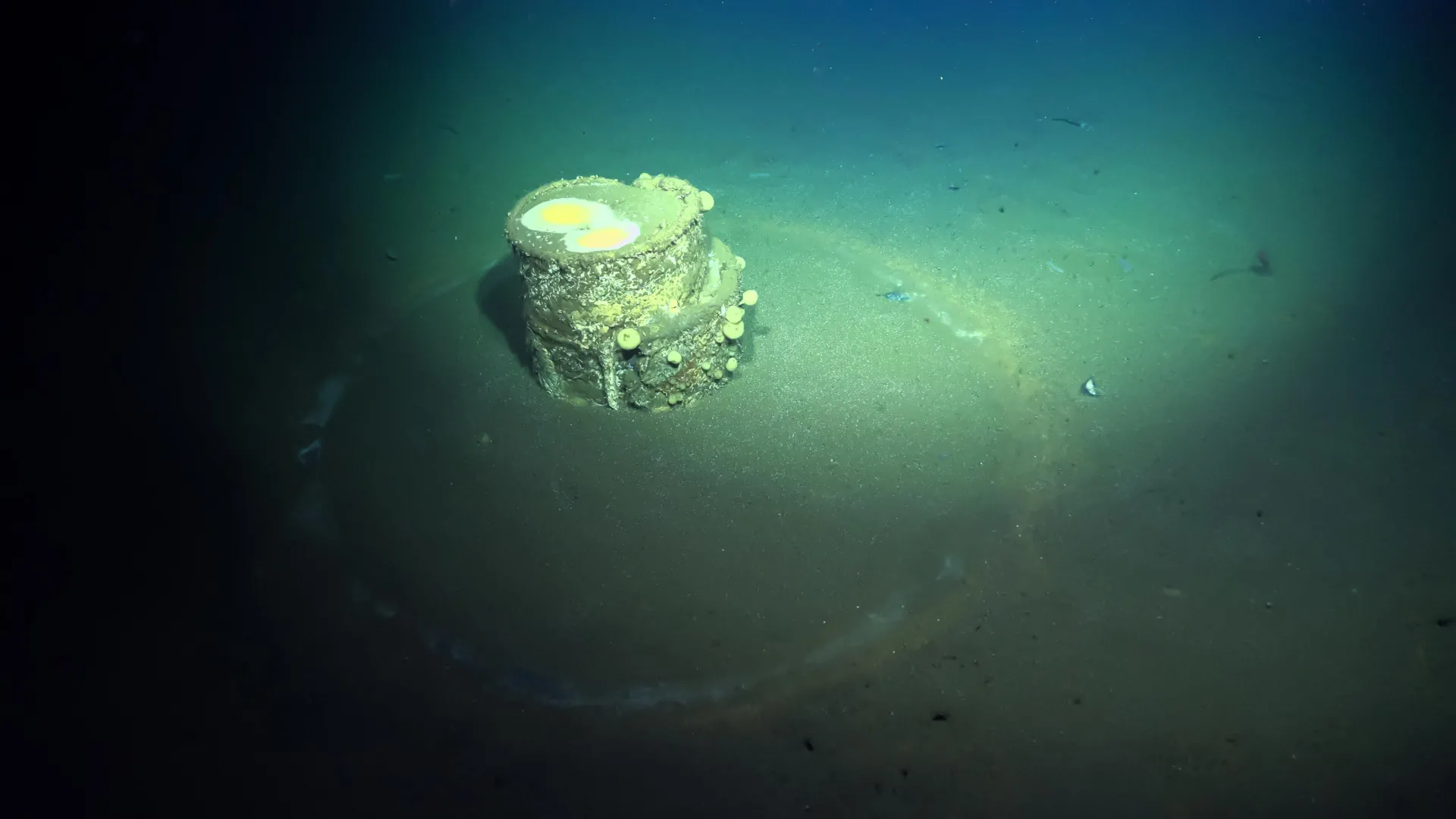Now Reading: Scientists Unravel Mystery of Ocean Floor’s Ghostly Halos
-
01
Scientists Unravel Mystery of Ocean Floor’s Ghostly Halos
Scientists Unravel Mystery of Ocean Floor’s Ghostly Halos

Rapid Summary
- Corroded metal barrels off Los Angeles have been found to contain caustic alkaline waste, forming “ghostly halos” on the sea floor.
- A Scripps Institution study revealed the alkaline waste created concrete-like crusts and white halos, transforming seafloor environments into extreme habitats similar to hydrothermal vents.
- Sediments around these barrels showed high pH levels (~12), low bacterial diversity, and specialized microbes adapted to alkaline conditions.
- The mineral brucite formed due to reactions between leaked alkaline waste and magnesium in seawater, creating hardened sediment areas with persistent impacts over 50 years.
- Researchers identified white halos as visual indicators of alkaline waste contamination; approximately one-third of visually observed barrels displayed such halos.
- Historical records from 1930s-1970s show deep-water dumps included various hazardous materials like DDT wastes, refinery by-products, military explosives, and radioactive items; many dump site sediments remain heavily contaminated with DDT-a chemical banned in 1972 harmful to humans and wildlife.
- Physical removal of contaminated sediments could cause further harm; ongoing research explores microbial breakdown as a possible remediation method.
indian Opinion Analysis
The findings underline the long-term environmental consequences of ocean dumping practices that persisted for decades before modern regulatory frameworks were established. for India-where industrial output is growing-it serves as a cautionary tale about mismanagement of hazardous wastes. Poor disposal practices can create enduring ecological damage that lasts for generations while harming marine biodiversity.
IndiaS coastal regions host sensitive ecosystems with important human reliance on fisheries and biodiversity. This study emphasizes the importance of rigorous tracking and environmentally sound disposal systems for industrial pollutants within India’s rapidly expanding industries like chemicals manufacturing or oil refining.While remediation efforts are underway at historical sites like those near Catalina Island, India’s policymakers might benefit from international collaborations addressing underwater pollution detection technologies or microorganism-based solutions showcased here.ultimately, this case highlights why preventive measures backed by strong enforcement mechanisms remain more cost-effective than belated interventions to mitigate ecological damage after decades-long neglect.


























